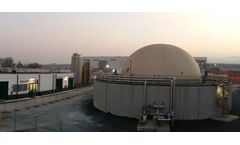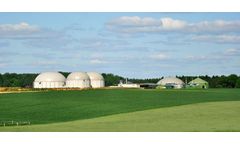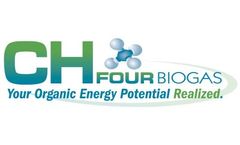Anaerobic Digestion Energy Articles & Analysis
12 articles found
Critical considerations for anaerobic digestion projects In the field of industrial wastewater treatment, anaerobic digestion is a powerful process that transforms waste into valuable by-products. Most notably, it produces renewable energy in the form of biogas, which can be used to fuel operations, cogenerate ...
With an underdeveloped waste-to-energy market, new legislation promotes greater adoption of anaerobic digestion On August 16, United States President Biden signed the $750 billion Inflation Reduction Act (IRA) into law and biogas industry groups immediately hailed its hefty incentives for anaerobic digestion, a ...
Feedstocks can include manure, sewage biosolids, and food wastes. Among anaerobic digestion’s advantages is its ability to treat high-load streams while producing valuable products, including energy. Anaerobic digestion can produce significantly more energy than required to operate the ...
Anaerobic digestion treats high-strength wastewater streams while producing energy for a range of processes The wastewater treatment process called anaerobic digestion is the kind of flexible solution that is bringing the circular economy from the drawing board to reality. ...
Anaerobic digesters/Biogas storage tanks are widely utilized at fields of industry, agriculture or municipality. ...
According to a new analysis, working on both clean water and biofuels production in tandem may reap significant environmental and economic benefits. For example, using anaerobic digestion to treat manure could prevent nutrient-runoff pollution and create a renewable energy source, according to the study by EcoEngineers and Goss & Associates. ...
As focus around the world has turned to renewable energy, anaerobic digestion has started to become an economically viable energy source that capitalizes on humans at our most wasteful — and most creative. ...
This study assessed an alternative concept for co-treatment of sewage and organic kitchen waste in Vietnam. The goal was to apply direct membrane filtration for sewage treatment to generate a permeate that is suitable for discharge. The obtained chemical oxygen demand (COD) concentrations in the permeate of ultrafiltration tests were indeed under the limit value (50 mg/L) of the local ...
Anaerobic fermentation of press mud and sewage for biohydrogen production was conducted in six batch reactors for various total solid concentrations between 5–8.5%. ...
Introduction The Moosburg wastewater treatment plant has one 634,008 gallons anaerobic digester, which was designed to process a maximum 23,775 gallons/day of activated sludge at 3.5% solids. The AD is currently processing 17,170 gallons/day of sludge and producing 39decatherms/day of energy from biogas. The operators would like to better ...
This paper describes a modelling tool that integrates Material Flow Analysis, energy production and Greenhouse Gas (GHG) emissions accounting for biomass flows at a regional scale. ...
Anaerobic digestion is a series of processes in which micro organisms break down biodegradable material in the absence of oxygen. ...








